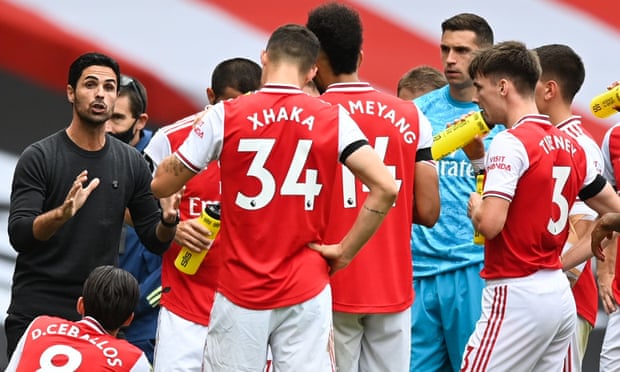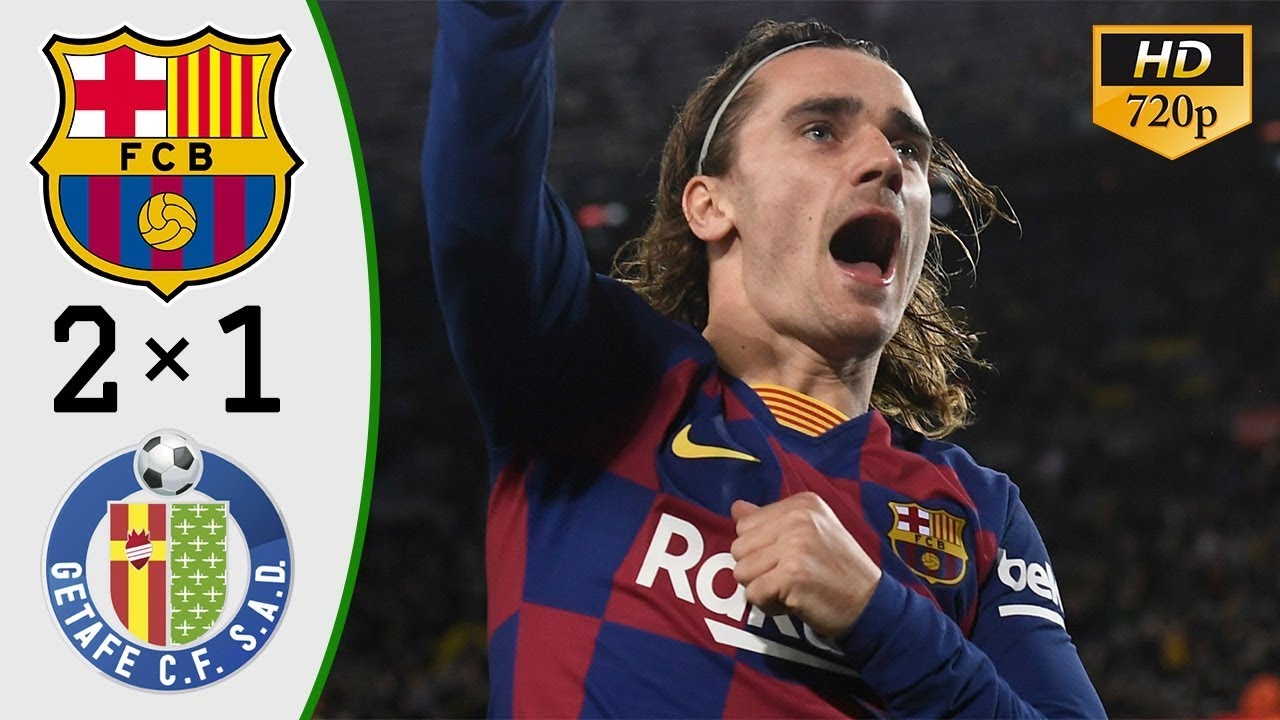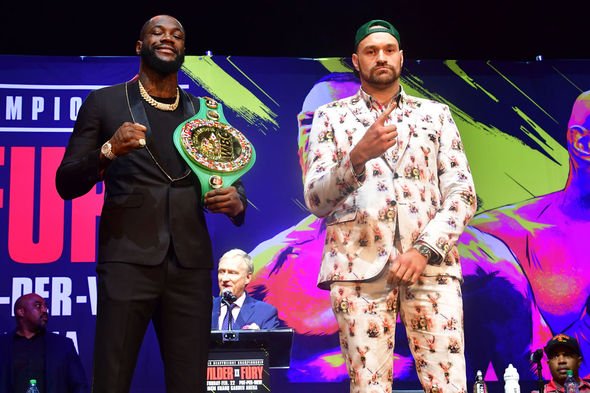
Mikel Arteta’s Arsenal were high on confidence ahead of Saturday’s FA Cup semi-final against Manchester City after defeating the Premier League title holders, Liverpool, at the Emirates. In their first appearance at Wembley since a disappointing 3-0 defeat in the League Cup final two years ago at the hands of this weekend’s opponents, Arteta got some revenge against his former boss, reports statsperform.com.
After finishing his playing career at Arsenal and retiring in 2016, Mikel Arteta spent two years as a coach under Pep Guardiola at Manchester City before returning to his former club as manager in December.
Arteta did little to distract fans from their Christmas hangover in his first match in charge, with an underwhelming 1-1 draw on Boxing Day away at relegation contenders Bournemouth, but he has made a respectable start to life as a Premier League manager with eight wins, six draws and four losses.
Making the change to three at the back
In all of his first ten Premier League games, Arteta started with a 4-2-3-1 formation before first deviating from this after lockdown with a 4-3-2-1 against Manchester City.
Since then, he has consistently turned to a 3-4-3, starting with this formation in his most recent six games in charge. In terms of minutes played in each formation, accounting for formation changes within games, Arteta has played 51% of the time with a 4-2-3-1 and 30% in his newly favoured 3-4-3. What’s most interesting about this shift to three-at-the-back is the change in personnel between these set ups.
Since his shift to the 3-4-3, Arteta appears to have found more consistency with his team selection with Granit Xhaka and Dani Ceballos nearly ever-present in the two central midfield positions and Pierre-Emerick Aubameyang continuing to excel from the left wing. With his full backs returning from the medical room, Arteta has been able to play Bukayo Saka further forward and deploy a high energy full back pairing of Kieran Tierney and Héctor Bellerín.
If it wasn’t for his injuries, Pablo Marí would have almost certainly featured more in Arteta’s new look backline. The Spanish centre-back, who made his loan move permanent last month, meets Arteta’s demands for a left-footed centre back and would be a more natural option in this position than Sead Kolasinac. Having a left-footed player in this position changes the passing options available in the build-up and is something he may have picked up from working with Pep Guardiola, who spoke earlier in the season about the importance of Aymeric Laporte’s left foot to the way Manchester City play.
While injuries and off-the-field issues have played a significant role, the notable omissions since the initially favoured 4-2-3-1 formation was abandoned are Mesut Özil, Ainsley Maitland-Niles and Sokratis, with all three players struggling for minutes fuelling increased media speculation about their futures at the club. Meanwhile David Luiz, Granit Xhaka and Aubameyang are clearly emerging as Arteta’s first names on the team sheet, with Shkodran Mustafi another surprisingly regular feature at the back.
Generating goal scoring opportunities from pressing
With Arteta facing his former boss Pep Guardiola for the second time as a manager, focus again turned to the lessons Arteta learned under one of the best managers in the world.
Much has been said about Arteta’s attitude to pressing since he took over at Arsenal and the inevitable comparisons this brings to Pep’s Manchester City. Whether it is the subtle instructions to his players to commit opposition players before making a pass in order to take them out of the game, or the more meticulous pressing patterns when Arsenal are out of possession, it is clear to see the influence he has had since he took over.
This is reflective in the efficiency of Arsenal’s pressing and their ability to turn these into goal scoring opportunities. We can see below Arsenal’s high turnovers this season before and after Arteta took charge, where a high turnover is defined as a team winning possession in open play within 40 metres of the opposition goal.
While the quantity of high turnovers has remained constant, Arteta’s Arsenal have converted 22% of these high turnovers into goal scoring opportunities, compared to 11% before he joined. In fact, since he took charge, no team has scored more goals from high turnovers than Arsenal (five) with two of these coming at the expense of Liverpool on Wednesday night. Despite often favouring Eddie Nketiah as his high energy striker leading the press from the front, it is actually Alexandre Lacazette who has made the most high turnovers (11) under Arteta in the Premier League this season.
Defensive fragility still apparent
While there is an understandable optimism amongst Arsenal fans about their performances under the new manager, there may be some cause for concern given their underlying performances according to their xG, at both ends of the pitch.
We have measured Arsenal’s underlying performances by their expected goal difference, given the quality of chances taken for and against Arsenal (xG for Arsenal minus xG against Arsenal). Since Arteta’s first match in charge, you can see that Arsenal’s underlying performances haven’t actually improved despite their increase in actual goal difference. This over performance relative to their expected results isn’t likely to be sustainable.
If we break this down further, we can see that Arteta’s Arsenal have been both scoring above expectation and conceding below expectation. They have scored 29 non-penalty goals from quality of chances, according to xG, that you would expect a team to only score 21.5 goals.
More alarmingly, the major cause for concern is in the disparity between their attacking and defensive outputs. Arsenal have taken 174 non-penalty shots since Arteta took over but have conceded 237. The average quality of these shots (xG per shot) has been similar but the key difference has been in the execution. Arsenal’s opponents have scored 16 non-penalty goals against them, but the underlying chances suggest they should have scored over nine more (25.3 expected goals).
While Arsenal are still in with a chance of finishing in the European places this season, it is a big worry where they might have actually finished if their recent results were reflective of their underlying performances.
While there is no doubt that their attitude and spirit has transformed under Arteta, a hard fought and unexpected win against the runaway leaders, Liverpool, on Wednesday night only papers over the cracks of the need for improvement in this Arsenal team. Arteta has spoken very honestly in recent interviews about the need for future investment in the squad if they are going to seriously challenge for titles going forwards.
In the meantime, taking this Arsenal team to an FA Cup final, in his first season in charge at the expense of his former boss, is certainly a good start to his career in management.



